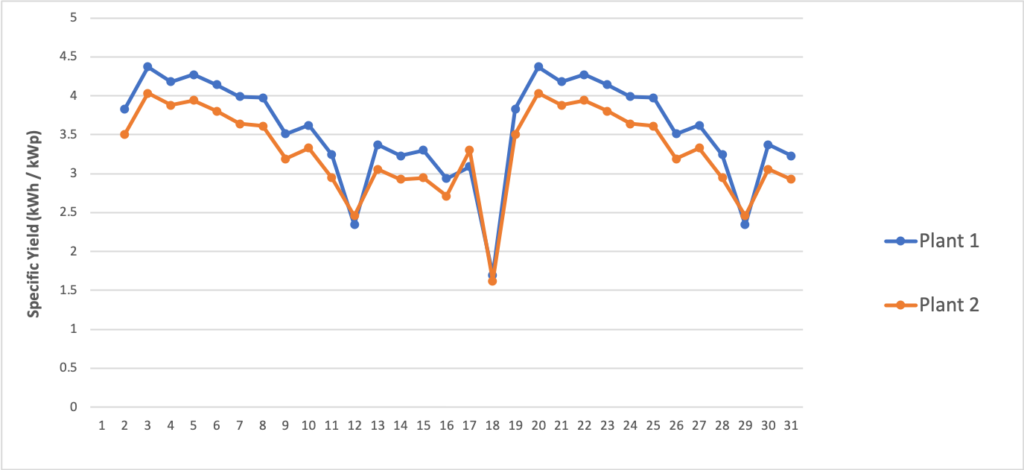One of the benefits consumers seek from their grid-connected solar PV rooftop system is optimum energy generation. However, in many cases, it is seen that the installed solar PV rooftop project is not generating the expected optimum energy and is said to be underperforming.
In this article, we will discuss probable problems, troubleshooting methods, and solutions that a consumer or small EPC team can perform in case their solar PV rooftop system is underperforming.
So if you find that your system is generating less than the expected energy follow the below steps:
Step 1: Compare the specific yield of your plant with neighbouring solar PV rooftop projects
Sometimes, the lower generation can be due to the climatic conditions such as heavy clouds, smog, pollution, rain etc.. As a very first troubleshooting step, it is recommended to compare the specific yield of your solar PV rooftop project with a neighbouring solar PV rooftop project. If there is no plant in the neighbourhood or it is not possible for a consumer to get this data from neighbouring plant owners, seek support from the EPC player or DISCOM (Distribution Company).

Pic credits team Solar Saarthi.
Daily specific yield can be calculated as below:
Daily Specific Yield (kWh / kWp) = Daily Energy Generation (kWh) / Installed DC Capacity of Plant (kWp)
For example, if you have a 5 kWp solar PV rooftop project installed at your premises and the daily energy value for a day is 20 kWh. The specific yield of your plant is:
Daily Specific Yield (kWh/kWp) = 20 / 5 = 4 (kWh / kWp)
Through this process if you discover that all the plants in the nearby region are generating almost same energy (i.e. similar specific yield values), then there is no issue with your plant and it is generating optimum energy.
On the other hand, if you discover that daily specific yield values of your plant is lower than other’s or is not following the trend that other plants are following, proceed to “Step 2”.
0 Comments